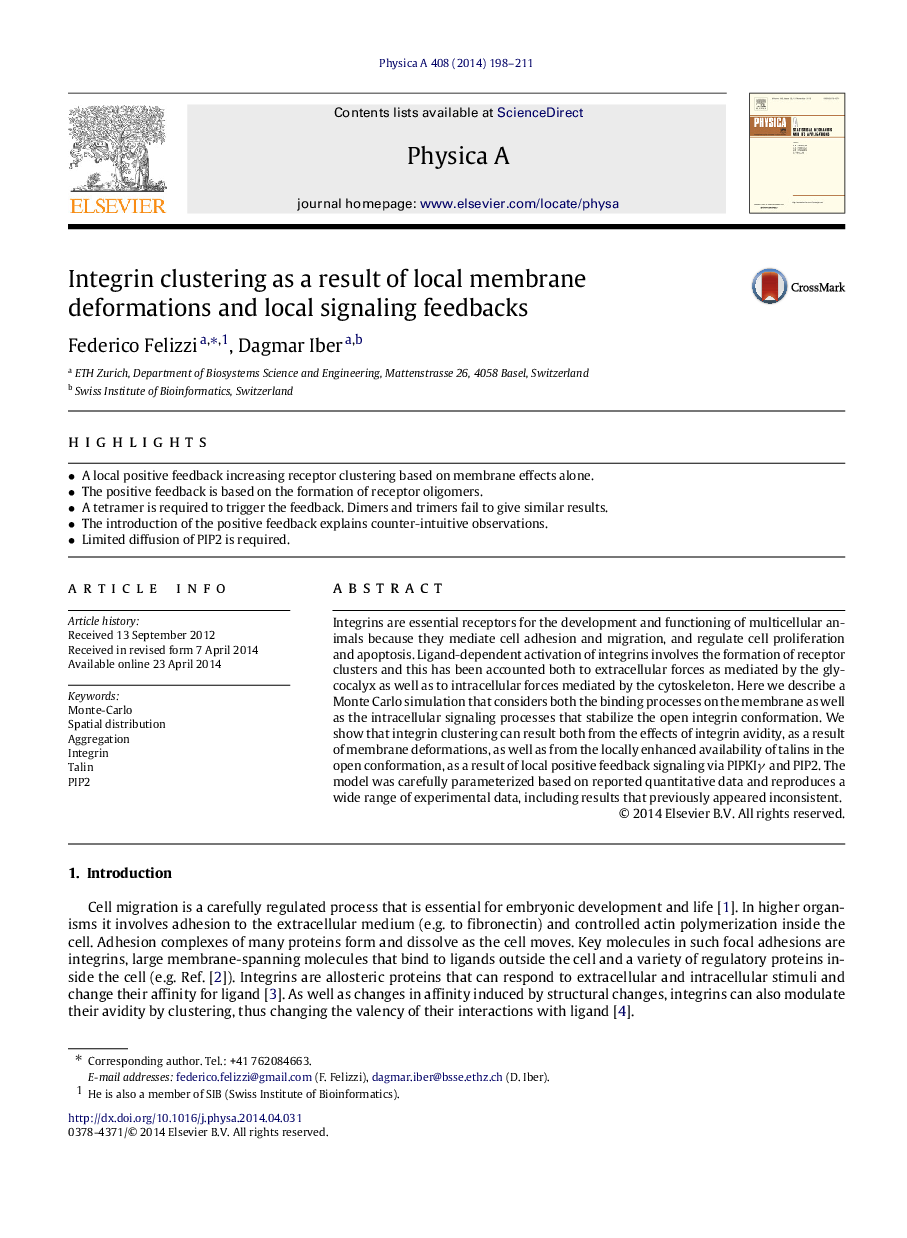| Article ID | Journal | Published Year | Pages | File Type |
|---|---|---|---|---|
| 973911 | Physica A: Statistical Mechanics and its Applications | 2014 | 14 Pages |
•A local positive feedback increasing receptor clustering based on membrane effects alone.•The positive feedback is based on the formation of receptor oligomers.•A tetramer is required to trigger the feedback. Dimers and trimers fail to give similar results.•The introduction of the positive feedback explains counter-intuitive observations.•Limited diffusion of PIP2 is required.
Integrins are essential receptors for the development and functioning of multicellular animals because they mediate cell adhesion and migration, and regulate cell proliferation and apoptosis. Ligand-dependent activation of integrins involves the formation of receptor clusters and this has been accounted both to extracellular forces as mediated by the glycocalyx as well as to intracellular forces mediated by the cytoskeleton. Here we describe a Monte Carlo simulation that considers both the binding processes on the membrane as well as the intracellular signaling processes that stabilize the open integrin conformation. We show that integrin clustering can result both from the effects of integrin avidity, as a result of membrane deformations, as well as from the locally enhanced availability of talins in the open conformation, as a result of local positive feedback signaling via PIPKIγγ and PIP2. The model was carefully parameterized based on reported quantitative data and reproduces a wide range of experimental data, including results that previously appeared inconsistent.
